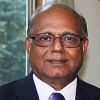Building social cohesion: How can education help?

French sociologist Emile Durkheim described social cohesion as organic solidarity arising from peoples' dependence on each other in a modern society. But is social cohesion—i.e., fostering solidarity, mutual trust, shared aspirations and acceptance of diversity in society—a matter of concern? Does education have a role in building social cohesion?
Three major parallel streams of education in Bangladesh divide the nation, entrench social and economic disparities, and stand in the way of building an equitable, inclusive and united nation.
Education Minister Dipu Moni, and Dean of General Education at Brac University, Samia Huq, have raised the curtain on the problem in a recent article ("Social Cohesion through Education," Whiteboard, March 2022): "In Bangladesh, different streams of educational institutions have emerged with particular histories and purposes," they write. "The class selection and characteristics of each type of institution turn the students into different types of citizens."
The mainstream Bangla-medium, government and government-assisted schools enrol the majority of Bangladeshi school-going students. The madrasa system, with one stream receiving government support and the other being an independent Qawmi stream, serves a substantial minority of students. A small elite section of society sends their children to English-medium proprietary schools.
One aspect of unfairness is the low quality of schools for the majority of children. This majority includes madrasa students (both in Alia and Qawmi madrasas), and most students in mainstream Bangla schools (excepting an elite enclave of special institutions such as cadet colleges and the highly-selective private Bangla schools). Students in the mushrooming low-quality, commercial English-medium "kindergartens" (which often include secondary level classes) are also among the deprived.
The three different streams also prevent building a common foundation of knowledge, shared experience and cultivation of common values among young people. Children study and live in different worlds from each other. Opportunities and life prospects disproportionately favour children attending English-medium schools and the elite enclave of Bangla-medium schools.
Schools cannot remedy all social divisions, but they can help mitigate them using a shared curriculum. At present, schools reinforce these divisions and extend them to the next generation.
Post-independence, the education policy report of the Qudrat-e-Khuda Commission envisioned a unified school system with a common core curriculum in a Bangla-medium public system. English-medium private schools and madrasas would be exceptions.
Madrasa education was to follow the common curriculum at the primary stage and then become a vocational stream. The aim of madrasas would be to prepare people for religion-related occupations, rather than being a parallel system till university.
The Qudrat-e-Khuda Commission report was ignored by the military rulers after 1975. Madrasas—both Alia and Qawmi—grew rapidly in the 1980s, as did the proprietary English-medium schools. Both enjoyed government patronage and encouragement. Post-1990 democratic governments, both the BNP-led and the Awami League-led coalitions, found it difficult or undesirable to try reversing the trend.
The 2010 National Education Policy espoused the goal of the Qudrat-e-Khuda Commission of a unified public education system with equity and excellence. But it did not lay out specific guidelines for the major structural reform the system required to undo the three-way division that had become entrenched by then. Such a reversal called for major steps in financing, governance, curriculum development, pedagogy, teacher preparation and student assessment in the school system. An initiative of this scope and scale has not been taken.
The three major streams of education clearly parallel the larger divisions in society. The elite—representing business, political higher-ups, higher bureaucracy, and the higher echelons of the armed forces—patronise private English-medium schools. The middle and lower-middle mainstream send their children to government or government-supported Bangla-medium schools. The poor enrol their children in the Alia or Qawmi madrasas for reasons of affordability and/or due to religious motivation.
This structure has suited the political and economic elite and, consequently, there has been little interest in rocking the boat.
When religion becomes a central tenet of the political agenda—as in Pakistan, and increasingly in India—it does not augur well for nation-building or creating an equitable and inclusive education system to serve the nation's aspirations.
For example, the "saffronisation" drive symbolising the Hindutva ideology of the current ruling regime in India has led to dropping the history of the Mughal period from the curriculum of secondary schools under the Central Secondary Education Board. Hindu mythology has been invoked to glorify the ancient scientific achievements of India.
In Bangladesh, we witnessed attempts to select and exclude literature and language content in school textbooks as a way of appeasing some religious groups, which was seen as an expedient in the electoral calculus. The growth of the two streams of madrasa as parallel systems rivalling the mainstream remains an intractable social cohesion challenge.
The questions raised are difficult and complex. The vision of the Qudrat-e-Khuda commission, with Bangabandhu's support, was to design an education system for independent Bangladesh guided by the pillars of the nation's constitution—democracy, nationalism, socialism, and secularism. This aim was derailed in 1975 and the pillars have become contested concepts in the last five decades.
The education minister and her co-writer have to be commended for flagging the challenge. And for posing the question: "How will teachers and learners engage with one another to live in pluralistic ways?"
The challenge for the policymakers and the citizenry is to reclaim the pillars of national ideology, render them a humane, progressive and contemporary meaning, and work on re-formulating educational purposes and practices based on these principles.
Dr Manzoor Ahmed is professor emeritus at Brac University, chair of Bangladesh ECD Network (BEN), and vice-chair of Campaign for Popular Education (CAMPE). Views expressed in this article are his own.

 For all latest news, follow The Daily Star's Google News channel.
For all latest news, follow The Daily Star's Google News channel. 



Comments